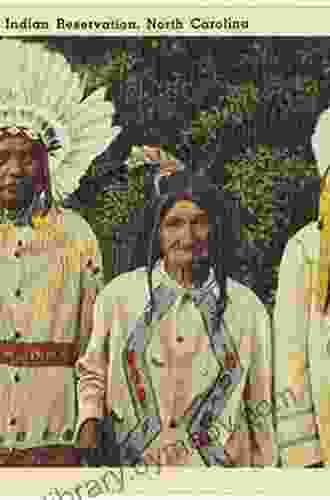Economic Development In Indian Country: Native America's Path to Prosperity

Indian Country, home to over 574 federally recognized tribes, encompasses a vast and diverse landscape of cultures, traditions, and economic realities. For centuries, Native American communities have faced unique challenges in achieving economic prosperity, often hindered by historical injustices, cultural differences, and a lack of access to resources. However, the tide is turning as Native American tribes and organizations are taking bold steps towards economic self-determination.
This comprehensive article delves into the intricate world of economic development in Indian Country. We explore the key drivers, challenges, and strategies that are shaping the economic landscape of Native American communities. By drawing on expert insights and real-world examples, we aim to shed light on the path towards sustainable economic growth and empowerment for Native America.
4.9 out of 5
| Language | : | English |
| File size | : | 1146 KB |
| Text-to-Speech | : | Enabled |
| Screen Reader | : | Supported |
| Enhanced typesetting | : | Enabled |
| Word Wise | : | Enabled |
| Print length | : | 225 pages |
Drivers of Economic Development in Indian Country
Understanding the unique drivers that influence economic development in Indian Country is crucial. These factors include:
- Tribal Sovereignty: The inherent right to self-governance allows tribes to develop their own economic policies and create a conducive environment for business.
- Natural Resources: Abundant natural resources, such as land, water, and minerals, provide a strong foundation for economic activities.
- Cultural Heritage: Traditional crafts, art, and tourism offer unique economic opportunities that leverage the cultural richness of Native American communities.
- Entrepreneurship: Native Americans are increasingly embracing entrepreneurship, starting businesses that cater to both tribal and non-tribal markets.
- Education and Workforce Development: Investing in education and workforce training programs empowers Native Americans with the skills and knowledge needed for economic success.
Challenges to Economic Development
While there are significant opportunities for economic development, Native American communities also face challenges that hinder their progress:
- Historical Injustices: The legacy of colonization, forced assimilation, and treaty violations has had lasting economic consequences.
- Lack of Access to Capital: Traditional financial institutions often view Native American businesses as high-risk, making it difficult to secure loans or investments.
- Infrastructure Deficiencies: Inadequate infrastructure, such as transportation, energy, and broadband, can limit economic growth and investment.
- Cultural Barriers: Misconceptions and stereotypes about Native Americans can create obstacles in business dealings.
- Federal Policies: Complex regulations and bureaucratic hurdles can hinder economic development efforts.
Strategies for Economic Development
In light of these challenges, Native American communities are adopting innovative strategies to foster economic development:
- Tribal Enterprises: Establishing tribally owned and operated businesses generates revenue and creates jobs within Indian Country.
- Tourism and Cultural Preservation: Promoting cultural heritage through tourism, arts, and crafts can attract visitors and generate economic activity.
- Entrepreneurship Support: Providing mentoring, training, and access to capital for Native American entrepreneurs.
- Partnerships and Collaborations: Collaborating with non-tribal businesses, government agencies, and educational institutions to leverage resources and expertise.
- Community-Based Development: Involving community members in economic decision-making and ensuring that development benefits all members of the tribe.
Success Stories and Case Studies
Numerous Native American communities have achieved remarkable economic success stories by implementing these strategies:
- Mashantucket Pequot Tribe: Generated billions of dollars in revenue through the Foxwoods Resort Casino, creating jobs and stimulating the local economy.
- Blackfeet Nation: Developed a thriving tourism industry based on its stunning natural scenery and cultural heritage.
- Navajo Nation: Launched a successful arts and crafts enterprise, showcasing the exquisite craftsmanship of Navajo artisans.
- Fond du Lac Band of Lake Superior Chippewa: Established a community-based development corporation that invests in local businesses and economic initiatives.
- Cherokee Nation: Created a diversified economy with a focus on education, healthcare, manufacturing, and tourism.
Government Partnerships and Initiatives
The federal government has a significant role to play in supporting economic development in Indian Country:
- Indian Community Development Block Grant (ICDBG): Provides funding for infrastructure, housing, and economic development projects.
- Bureau of Indian Affairs (BIA): Offers technical assistance and grants for economic development initiatives.
- Indian Health Service (IHS): Supports healthcare infrastructure and workforce development, which are essential for a healthy and productive workforce.
The Path to Sustainable Economic Growth
Economic development in Indian Country is not without its challenges, but it is a journey that is filled with potential and determination. By embracing their inherent strengths, addressing the challenges head-on, and implementing innovative strategies, Native American communities are paving the path towards sustainable economic growth and prosperity.
This article provides a comprehensive overview of the key drivers, challenges, and strategies for economic development in Indian Country. As Native America continues to forge its own economic destiny, it is essential to support their efforts and celebrate their successes. By fostering a spirit of collaboration and empowerment, we can collectively create a brighter economic future for Native American communities.
4.9 out of 5
| Language | : | English |
| File size | : | 1146 KB |
| Text-to-Speech | : | Enabled |
| Screen Reader | : | Supported |
| Enhanced typesetting | : | Enabled |
| Word Wise | : | Enabled |
| Print length | : | 225 pages |
Do you want to contribute by writing guest posts on this blog?
Please contact us and send us a resume of previous articles that you have written.
 Book
Book Novel
Novel Page
Page Chapter
Chapter Text
Text Story
Story Genre
Genre Reader
Reader Library
Library Paperback
Paperback E-book
E-book Magazine
Magazine Newspaper
Newspaper Paragraph
Paragraph Sentence
Sentence Bookmark
Bookmark Shelf
Shelf Glossary
Glossary Bibliography
Bibliography Foreword
Foreword Preface
Preface Synopsis
Synopsis Annotation
Annotation Footnote
Footnote Manuscript
Manuscript Scroll
Scroll Codex
Codex Tome
Tome Bestseller
Bestseller Classics
Classics Library card
Library card Narrative
Narrative Biography
Biography Autobiography
Autobiography Memoir
Memoir Reference
Reference Encyclopedia
Encyclopedia Stephen King
Stephen King W T Hamilton
W T Hamilton Mark Bixler
Mark Bixler Paul Nardozzi
Paul Nardozzi Steven D Fleming
Steven D Fleming Mark Csikszentmihalyi
Mark Csikszentmihalyi T J Gorton
T J Gorton Patricia Crisafulli
Patricia Crisafulli Sam Demas
Sam Demas Melinda Leigh
Melinda Leigh Nicola Yoon
Nicola Yoon Patrick Bruskiewich
Patrick Bruskiewich Linda Nochlin
Linda Nochlin Mark Seidenberg
Mark Seidenberg Theo Farrington
Theo Farrington Kyle Higgins
Kyle Higgins Michael Medved
Michael Medved R H Tawney
R H Tawney Steven Rabb
Steven Rabb Olivier Zunz
Olivier Zunz
Light bulbAdvertise smarter! Our strategic ad space ensures maximum exposure. Reserve your spot today!

 Adrien BlairWhat Russian Year Olds Know By Heart: A Literary Journey into the Heart of...
Adrien BlairWhat Russian Year Olds Know By Heart: A Literary Journey into the Heart of... Osamu DazaiFollow ·10.1k
Osamu DazaiFollow ·10.1k Adrian WardFollow ·8.1k
Adrian WardFollow ·8.1k Gerald BellFollow ·5.6k
Gerald BellFollow ·5.6k Corey HayesFollow ·6.2k
Corey HayesFollow ·6.2k Clark CampbellFollow ·17.8k
Clark CampbellFollow ·17.8k Alexander BlairFollow ·6.6k
Alexander BlairFollow ·6.6k Hugh ReedFollow ·14.6k
Hugh ReedFollow ·14.6k Jules VerneFollow ·16k
Jules VerneFollow ·16k

 Clay Powell
Clay PowellDiscover the Enigmatic Beauty and Profound Meaning in...
An Exploration of Emptiness, Fulfillment,...

 Brenton Cox
Brenton CoxThe Life and Times of the Woman Who Changed Abortion: The...
Norma McCorvey, the woman known...

 Darius Cox
Darius CoxBest 60 Short Hairstyles For Women With Thick Hair: A...
Embracing the beauty of...

 John Parker
John ParkerThe Healthy Pregnancy Book: Your Essential Guide to a...
Pregnancy is a...
4.9 out of 5
| Language | : | English |
| File size | : | 1146 KB |
| Text-to-Speech | : | Enabled |
| Screen Reader | : | Supported |
| Enhanced typesetting | : | Enabled |
| Word Wise | : | Enabled |
| Print length | : | 225 pages |













